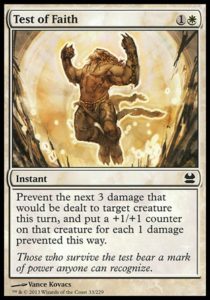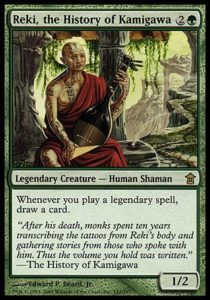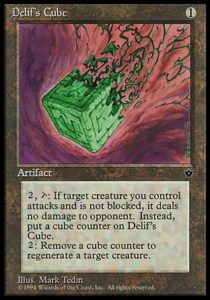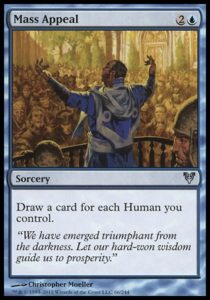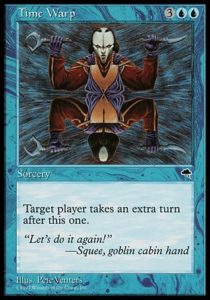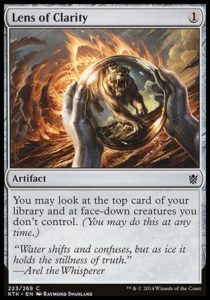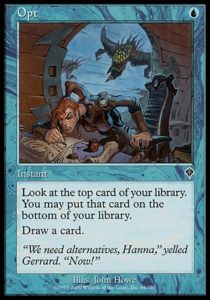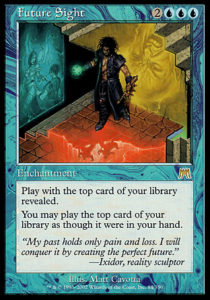Cubes are wonderful things. Magic and the making of it are wonderful things. Community involvement is a wonderful thing. Wizards is melding all three with its You Make the Cube contest! Everyone and anyone is invited to submit their designs to Wizards, a rare treat last seen in 2013’s You Make the Card, which resulted in Magic 2015’s Waste Not. In short, this is a wonderful opportunity that many people are going to take advantage of.
This contest presents many question whose answers will lead to winning submissions. Consider the following:
- What makes a cube good for a particular audience?
- What sorts of cubes have already existed on Magic Online?
- What sorts of cubes are likely to be popular on Magic Online?
- What sorts of cubes are unlikely to work on Magic Online?
And, the obvious question:
- What kind of cube is most likely to win this contest?
Audience
When it comes to a cube (or any kind of design) context is key. Now, I expect many folks to submit their 540-card cubes directly to Wizards as-is or with minor changes, but I would be concerned if I did so. The context of a paper cube is wildly different from that of Magic Online.
Paper cubes tend to be extremely personal. They’re usually designed for a very small group of people—someone’s close friends, extended friend group, their local game store’s community, or perhaps even just the designer. They’re played by tens of people, perhaps hundreds at most if we’re tracking a cube over many years. That’s perfectly fine—such cubes only need to appeal to a relatively small number of people, and can only be played so many times in a given period. After all, there’s only one copy of the cube! And we can’t play Magic all the time.
Magic Online cubes are designed for thousands of players to play continuously for about three weeks. Tens, if not hundreds, of cube drafts can happen simultaneously. A MTGO cube needs to appeal to a substantially larger and more diverse group of players than the majority of paper cubes do. In addition, it has to be able to withstand far more people playing with it. If it takes six drafts to figure out what’s too powerful in your cube, well, you’ve got time before the seventh draft to tweak it. Getting to six drafts took weeks, or at least a couple very long days. An online cube will be drafted six times within minutes of it going live. That demands a far hardier cube.
History
There are three cubes currently on Magic Online: Legacy Cube, Vintage Cube (previously known as Holiday Cube), and Legendary Cube. The first two are generally well-regarded, the latter somewhat less so (which I’ve previously discussed in depth). None of these cubes are static: practically every time they’ve returned to Magic Online, they’ve experienced either minor tweaks or major changes.
Legacy Cube is perhaps the most classic idea of cube: a collection of the most powerful cards and archetypes in Magic. Vintage Cube is Legacy Cube with the Power Nine and basically every broken card in Magic. Both cubes encourage players to build Legacy/Vintage Constructed decks. Contrast this with Legendary Cube, Magic Online’s less traditional cube. Legendary Cube encourages players to instead build Commander-like decks, which play slower games, a wider variety of cards, and have huge swings. Legendary Cube is quite different from the other two, though it’s worth noting that Legacy and Vintage Cube play quite differently from each other as well, despite having large overlaps in their card pools.
What Makes a Good Cube (for MTGO)
That’s the real question we’re driving towards. While practically any kind of cube is worth trying out, this contest is looking for more than a cube that eight people will enjoy. We’ve touched upon some criteria, but we should spell it all out. In my opinion, a good cube needs ARCO:
Appeal
Replayability
Clarity
Options
(well, and cards, basic lands, and players)
Appeal
Appeal is a cube’s ability to entice and hook a player. A cube, by nature of being a unique Limited format, already has some degree of appeal. However, every cube can usually be described in a kind of broad stroke that attracts some players and repels others. This is a good thing—as Rosewater says, it’s better for a design to be loved by some and hated by some than liked by everyone.
Vintage and Legacy Cubes have straightforward hooks: play with some of the most powerful and broken cards in Magic, taste the Constructed formats only a minority of folks play. Legendary Cube appeals more to those who enjoy Commander and Limited, though it enjoys the additional hook of not being the super-high-power-level cube that people have become accustomed to.
For a cube to be played, it has to be able to hook folks into trying it out. No cube can hook everyone, but an online cube has to have some mass appeal.
Replayability
If Appeal is the hook that attracts someone to a cube for the first time, Replayability is the line and sinker. Replayability is a gauge of how likely people are to play a cube repeatedly, or at least more than once. It’s a combination of two major factors: whether the cube is fun (which I’ll not rigorously define here), and whether it has enough variety that someone can draft it multiples times and end up in different-feeling archetypes.
Legacy Cube has fairly high replayability: it has distinct archetypes, it has cards which fit into multiple styles of decks, and no one deck seems to stay dominant between successive iterations of the cube. On the other side, the first iteration of the Legendary Cube had low replayability: most draft decks seemed be five-color “goodstuff” decks where the winner was whoever had the most card advantage—or the least mana problems.
Replayability is absolutely essential for a Magic Online cube. There are some fantastic cubes with really cool themes, like all-artifacts, or Lorwyn tribal, but they often suffer from the fact that successive drafts or different archetypes feel the same. An all-artifacts cube has to work hard to have some kind of a color pie or deeply-distinct archetypes (since everyone can put any artifact into their deck) and a tribal-heavy cube has to make sure that folks don’t draft on rails. A cube needs to remain novel over multiple drafts to be worth playing multiple times, and a Magic Online cube will be played a lot.
For a cube to be successful, it has to be fun, deep, and balanced enough to be played multiple times.
Clarity
Clarity is a cube’s ability to communicate its themes and archetypes. Part of this is the hook. It’s important—though not essential—for a cube to have a short, descriptive title or logline to serve as a guideline. But most important? The cards themselves.
If you open your first pack and see Tezzeret, the Seeker, you know that the cube has (at the very least) an artifact-heavy deck. If you instead open Jace, the Mind Sculptor, you know that the cube contains powerful blue cards, but know little about what kinds of archetypes exist within the cube. Tezzeret serves as a signpost, which provides a clear direction for a drafter to go in, or at least to know what to expect from other packs.
Other such cards include: Tooth and Nail, Progenitus, Student of Warfare, Mind’s Desire, Diregraf Captain, and Entomb. One of the biggest disservices one can do to a cube drafter is to include such signpost cards but not enough support for them: if your cube contains Progenitus and no ways (or too few) to cheat it into play, you’ve falsely signaled your player.
Clarity is perhaps the first Legendary Cube’s biggest weakness: Legendary is not a particularly clear theme. There are few legends-matter cards and many legendary creatures are already cube staples. Plus, many of its cards don’t need a particular archetype to function, other than a generous amount of fixing. When the cards don’t communicate the directions and themes of the cube, drafts get muddled. Decks can often feel the same, even if they rely on drastically different cards.
Cubes are clearer and easier to draft if they contain signpost cards—ones with limited or conditional functionality—to highlight archetypes and themes.
Options
The final criterion for successful cube design is options. This is a careful balance between having too much direction, which leads to drafting on rails; and too little direction, which leads to muffled “goodstuff” decks. As discussed in Clarity, players need some cards that only function in certain kinds of decks. But as we know from Replayability, successive drafts can’t feel overly similar. What if each card only fits a single archetype? After you’ve drafted them all, that’s it. You’ve exhausted the cube.
A cube has options if archetypes can blend together, or certain signpost cards can function in several different sorts of decks. Dark Ritual, for example, is at its best in a storm deck, but is also quite strong in a reanimator deck, and can be good in a deck with powerful cards to accelerate out, like Grave Titan or Karn Liberated. Kiln Fiend is at its best in a blue-red deck, but can also be a strong addition to a burn-heavy monored deck. Contrast them with Counterspell (which will be good in almost every blue deck) and Goblin Welder (which requires a high density of artifacts and ways to get them in the graveyard).
Cubes benefit from having a decent number of cards go into some, but not all decks, in addition to signpost cards and generically strong cards. They can dramatically increase the cube’s longevity by making successive drafts, even in the same archetypes, feel different.
That’s everything I know about what cubes need. Hopefully it’s of some use to you, either in Wizards’ upcoming contest, or just in general cube design. Tomorrow, I’ll go over my recommendations for how to create your own cube for this contest. Here’s looking forward to seeing what everyone comes up with!
—Zachary Barash
Zachary Barash is a New York City-based game designer. He’s played Magic since 1994, he loves Limited and drafts every available format (including several that aren’t entirely meant to be drafted). He loves Ulvenwald Mysteries, as it’s both a strong Limited card and tells a fantastic story entirely through its mechanics.

